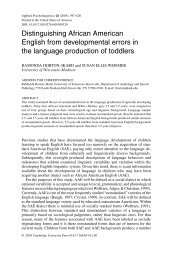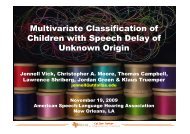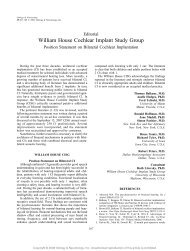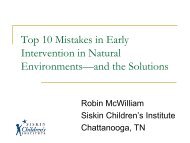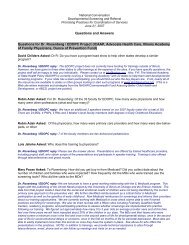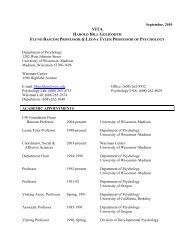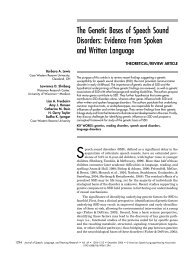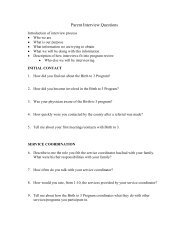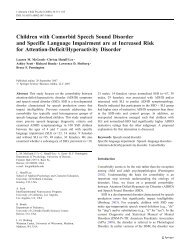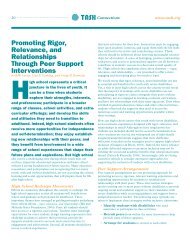Music and Language: A Developmental Comparison - Waisman ...
Music and Language: A Developmental Comparison - Waisman ...
Music and Language: A Developmental Comparison - Waisman ...
Create successful ePaper yourself
Turn your PDF publications into a flip-book with our unique Google optimized e-Paper software.
Learning <strong>Music</strong> <strong>and</strong> <strong>Language</strong>295fant-directed music share features cross-culturally, including simple, repeatedpitch contours (e.g., Trehub & Trainor, 1998). This is sensible, as contouris one of the first aspects of music to be discriminated by infants (Trehub,2003). Interestingly, renditions of caregivers’ songs tend to be sung at thesame pitch; when a given mother is recorded singing a particular song ondifferent days, she will tend to use the same key <strong>and</strong> absolute pitches(Bergeson & Trehub, 2002). As with infant-directed speech, these songsare preferred by infants from early in life (e.g., Masataka, 1999; Trainor,1996). In both domains, the affective properties of the infant-directed registerappear to be central; before the availability of other forms of communication,the prosodic contours in these two domains are a primary meansof transmitting emotional information (for a recent review, see Trehub,2003).Prosodic cues may also play a role in delineating the structural informationthat infants must learn to process in language <strong>and</strong> music. Prosodiccues are probabilistically correlated with structural boundaries such asclausal <strong>and</strong> phrasal units; for example, ends of clauses in speech are markedby syllable lengthening <strong>and</strong> a drop in pitch. The preferential listening methodologyhas been used assess the degree to which infants are aware of thesecorrelations. By 7 months of age, infants listen longer to speech samples inwhich pauses fall at clause boundaries than to speech samples in whichpauses are placed clause-internally (Hirsh-Pasek, Kemler Nelson, Jusczyk,& Cassidy, 1987). Interestingly, this is only the case when the speech samplesare derived from infant-directed speech; the more muted prosodic structureof adult-directed speech does not facilitate the detection of structuralboundaries by infants (Kemler Nelson, Jusczyk, Hirsh-Pasek, & Cassidy,1989). The results of these <strong>and</strong> similar experiments (see Jusczyk, 1997, fora review) suggest that infants detected whether or not the pauses matchedwith the other prosodic boundary markers in the speech. Similar resultsemerge from studies using musical materials (Mozart minuets); infants listenlonger to musical passages where pauses are placed at the ends of phrasesrather than in the middles of phrases (Jusczyk & Krumhansl, 1993;Krumhansl & Jusczyk, 1990). Analysis of the musical materials suggeststhat the same prosodic markers function at musical phrase boundaries asobserved with linguistic materials: a decline in pitch <strong>and</strong> a lengthening ofthe final note. It remains an open question whether infants are using thesame mechanism to detect these parallel cues across domains, or whetherinstead they have learned about these similar prosodic properties independently.Linguistic prosody <strong>and</strong> musical structure within a given culture may alsorelate in a more specific fashion. It is known that languages vary in theiroverall patterns of prosodic stress. Similarly, certain nationalistic styles ofmusic are distinguished by their usage of certain characteristic rhythmic



